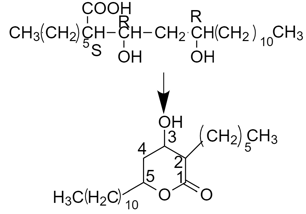Chemical Properties of Alcohols
Chemical Properties of Alcohols: Overview
This topic covers concepts, such as, Chemical Properties of Alcohols, Alcohols as Nucleophiles, Reaction of Alcohol with Ethylene Oxide & Reaction of Alcohol with NaNH2 etc.
Important Questions on Chemical Properties of Alcohols
An organic compound A has the molecular formula . It gets hydrolysed with dilute sulphuric acid and gives a carboxylic acid B and an alcohol C. Oxidation of C with chromic acid also produced B. C on dehydration reaction gives D. Identify A, B, C and D?
Aldol reaction is used as one of the step for which of the following conversions :
(i) Ethanol to 3-hydroxybutanal
(ii) Benzaldehyde to Benzophenone
Acid catalyzed hydration of alkenes except ethene leads to the formation of
The main product of the following reactions is
During dehydration of alcohols to alkenes by heating with concentrated the initiation step is –

Select the correct configuration for product.
In the given elimination reactions which can be taken as example(s) of regioselective but not stereo selective
Complete the following reaction sequences by writing structural formulae by writing organic compounds .
 Major product obtained in the reaction is:
Major product obtained in the reaction is:
Consider the following transformation

The intermediate that can not be formed during this transformation is
Consider the following reaction

The major product is
Choose the correct option for the given reaction.
When alcohol is treated with sodium amide, _____ gas is formed in this reaction.
How ether can be prepared by the reaction of sodium amide?
Write the reaction of alcohol with sodamide.
Describe the formation of protonated alocohol.
Ethoxide ion is a stronger base than hydroxide ion.
Why does alcohol not react with sodium hydroxide?
Which of the following conversion explains the acidic nature of alcohols?
The final product obtained by the reaction between alcohol and phosphorus pentachloride is:
